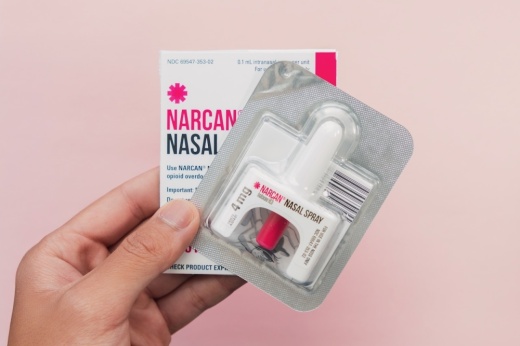On the agenda
On April 13, council will consider a resolution from District 6 Council Member Mackenzie Kelly aimed at increasing resources for the city's work with overdose prevention. The resolution asks to:
- Ensure Austin-Travis County EMS is provided with “consistent and reliable funding” for medicine used to reverse opioid overdoses, such as naloxone—commonly distributed as the Narcan spray—for both staff use and distribution to partners in the community;
- Explore sending the overdose medication and related materials to local businesses in opioid “hot spots” and budgeting for such efforts; and
- Consider placing opioid kits and Narcan in city facilities, potentially alongside medical equipment such as defibrillators.
The context
The council proposal centers on the overdose rescue kits that are circulated among Austin residents rather than materials EMS medics use in their daily work. The rescue kits include naloxone that can be administered by people with no medical training, according to the EMS department, and are separate from standard EMS supplies.
ATCEMS said it typically distributes about 50 of the overdose rescue kits around Austin on a monthly basis. Rescue kits—either those distributed by the city or from other sources—are used to resuscitate people experiencing an overdose before first responders arrive about 20 times per month.
Austin has not been paying for the program so far as ATCEMS relies on Texas Targeted Opioid Response grants to secure its kits. However, the EMS department noted the limitations of relying on a third-party grant program rather than a city-funded initiative; an EMS spokesperson said grants are “rapidly drying up” as requests for assistance pour in while funding decreases.
The rescue kits are not the only publicly available resource the city's medics use to combat the opioid crisis, which an EMS spokesperson highlighted as a persistent issue in the area.
“Distribution of these kits is part of the public outreach that ATCEMS already does—we do outreach to every person who overdoses on opioids within 24 hours. Narcan is also available from harm reduction agencies, including a couple of ‘Narcan vending machines’ across the city,” the spokesperson said in an email. “The opioid crisis is now a leading cause of death in the country, and opioid overdoses have continued to increase year by year for the last five years.”
The big picture
Expanding the city's funding of overdose reversal resources would be one of several strategies that city and county leaders have taken to address the opioid crisis locally.
Last spring, Travis County commissioners formally declared drug overdoses to be a public health crisis and signed off on additional funding for overdose reversal and addiction treatment. Weeks later, Austin council members also declared a health crisis and laid out a range of proposals to address the issue in the city. County leaders later approved a plan to send Narcan to 13 Austin-area bars as well.
More recently, local officials announced a federal partnership that will bring $2 million for federal drug education, outreach and prevention work to Central Texas. And since last fall, Texas and Gov. Greg Abbott have been promoting the One Pill Kills campaign as part of broader anti-fentanyl efforts at the state level.





